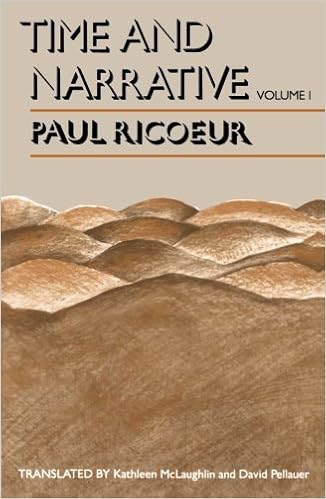
By Hunter Vaughan
Hunter Vaughan interweaves phenomenology and semiotics to research cinema's skill to problem traditional modes of inspiration. Merging Maurice Merleau-Ponty's phenomenology of belief with Gilles Deleuze's image-philosophy, Vaughan applies a wealthy theoretical framework to a comparative research of Jean-Luc Godard's motion pictures, which critique the audio-visual phantasm of empirical statement (objectivity), and the cinema of Alain Resnais, during which the sound-image generates leading edge portrayals of person adventure (subjectivity). either filmmakers substantially upend traditional movie practices and problem philosophical traditions to change our knowing of the self, the area, and the connection among the 2. movies mentioned intimately comprise Godard's Vivre sa vie (1962), Contempt (1963), and 2 or three issues i do know approximately Her (1967); and Resnais's Hiroshima, mon amour (1959), Last yr at Marienbad (1961), and The conflict Is Over (1966). Situating the formative works of those filmmakers inside of a broader philosophical context, Vaughan pioneers a phenomenological movie semiotics linking disparate methodologies to the reflected achievements of 2 doubtless irreconcilable artists.
Read or Download Where Film Meets Philosophy: Godard, Resnais, and Experiments in Cinematic Thinking (Film and Culture Series) PDF
Similar Phenomenology books
Time and Narrative, Volume 1 (Time & Narrative)
Time and Narrative builds on Paul Ricoeur's previous research, within the Rule of Metaphor, of semantic innovation on the point of the sentence. Ricoeur right here examines the production of which means on the textual point, with narrative instead of metaphor because the ruling predicament. Ricoeur reveals a "healthy circle" among time and narrative: time is humanized to the level that it portrays temporal adventure.
Phenomenology, including Marxism, pragmatism, and analytic philosophy, ruled philosophy within the 20th century—and Edmund Husserl is generally concept to were the 1st to advance the idea that. His perspectives prompted numerous very important later thinkers, comparable to Heidegger and Merleau-Ponty, who finally became phenomenology clear of questions of information.
The philosophical paintings of Jean-Luc Marion has opened new methods of talking approximately spiritual convictions and reviews. during this exploration of Marion’s philosophy and theology, Christina M. Gschwandtner provides a accomplished and demanding research of the tips of saturated phenomena and the phenomenology of givenness.
Additional info for Where Film Meets Philosophy: Godard, Resnais, and Experiments in Cinematic Thinking (Film and Culture Series)
For the modes of film illustration either extolled and, therefore, deconstructed by way of Godard, one desire basically examine the fi lms of Robert Flaherty, John Grierson, and Jean Rouch, during which the documentary types of ethnography and social realism solid specific modes of representing the realm objectively. during this culture illustration is split strictly among the apparatus-subject (including the fi lmmaker) and the seen item, a department intended to suggest a definite authenticity to the illustration and an innocence or neutrality within the rhetoric of the message. it truly is certainly this declare to goal detachment—detachment either from the referential content material and from any rhetorical stance—that has, from Dziga Vertov to Michael Moore, rendered the documentary style the main fertile flooring for propaganda. The early documentary used to be half go back and forth consultant, half newsreel. “The cinema launches itself on the planet and turns into a tourist,” Morin writes in summarizing early theories. 17 Cinema was once to be a manner of coming to understand far away lands, of bringing the international nearer: collecting wisdom of the representational content material based as visible item. The first jean-luc godard and the code of objectivity—175 improvement of this code, for either stylistic and affordable purposes, championed the desk bound digicam, the lengthy take, and, later, depth-of-field, formal parts for which Bazin could compliment the realism of Renoir’s and Welles’s fiction films. 18 this sort of ancient point of view unearths that formal features of the documentary style usually move over into fiction film’s try to supply the impact of authenticity, the declare to fact. therefore, a code of denotation is built for “documenting” the true and is then followed for giving the appearance of truth in a number of genres. notable cinematographic similarities are available, for instance, among English kitchen-sink documentaries of the Nineteen Thirties and the connotative codes of Italian neorealism within the Nineteen Forties, a historic echo confirmed via Bazin’s commentary that “since the struggle, cinema has assisted within the seen go back to documentary authenticity. ”19 With the evolution of more cost-effective and extra cellular gear, documentary practices later reversed their technical attributes, adopting a extra flattened picture produced in clearly lit events by means of a hand held digital camera to imitate the classy of nonprofessional domestic video clips being made at the streets with more cost-effective and extra cellular know-how. seriously influenced by way of such documentary filmmakers as Jean Rouch and the cultured often called cinéma vérité, the administrators of the recent Wave co-opted lots of those applied sciences and strategies, together with high-speed fi lm inventory, the hand-held digicam, and the discursive mode of the direct-address interview. certainly, those units stay stylistic connotations of objectivity this present day, in such different modern activities as fact tv and the Dogme ninety five manifesto, in addition to in mainstream fiction films that require the semblance of fact for optimum spectatorial affect, comparable to the thrillers The Blair Witch undertaking (Daniel Myrick and Eduardo Sánchez, 1999) and Cloverfield (Matt Reeves, 2008).



